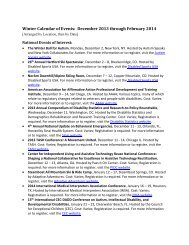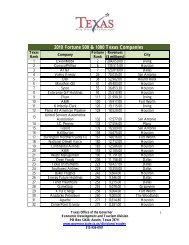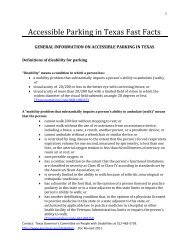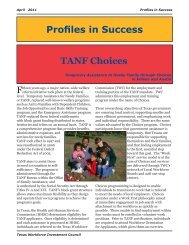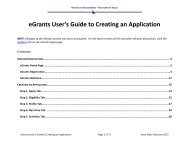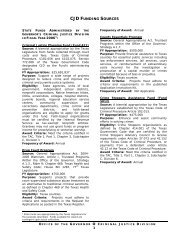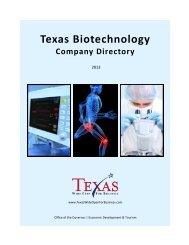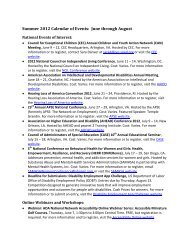People with Disabilities: A Texas Profile
People with Disabilities: A Texas Profile
People with Disabilities: A Texas Profile
You also want an ePaper? Increase the reach of your titles
YUMPU automatically turns print PDFs into web optimized ePapers that Google loves.
<strong>Disabilities</strong> can occur at any age and may result from numerous factors including accidents, disease,<br />
developmental difficulties, occupational hazards, and military service. However, Table 2 illustrates that<br />
the prevalence of disability increases as age increases. Age is an important covariate of disability.<br />
Because of the numerous scientific and social advances made during the 20th century, life expectancies<br />
in the U.S. have increased. Individuals in the U.S. now live long enough to experience chronic and<br />
degenerative diseases instead of experiencing mortality at younger ages from infectious disease. These<br />
degenerative diseases can be associated <strong>with</strong> many reported disabilities, especially for individuals in the<br />
older age categories.<br />
Differences also exist regarding educational attainment. Table 3 illustrates that in 2011 a greater<br />
percentage of individuals 25 years of age and older <strong>with</strong> a disability had less than a high school diploma<br />
or equivalency compared to individuals 25 years of age and older <strong>with</strong>out a disability. A greater<br />
percentage of individuals <strong>with</strong> a disability are high school graduates (or equivalency) than individuals<br />
<strong>with</strong>out a disability. However, only 13.9 percent of individuals <strong>with</strong> a disability have a bachelor degree<br />
or higher compared to 32 percent of individuals <strong>with</strong>out a disability.<br />
Table 3: Percentages of U.S. Population 25 Years of Age and Older <strong>with</strong> and <strong>with</strong>out <strong>Disabilities</strong> by<br />
Education Level, 2011<br />
Education Level With a Disability<br />
Without a<br />
Disability<br />
Less than high school graduate 25.8% 11.5%<br />
High school graduate (includes equivalency) 34.5% 27.1%<br />
Some college or associate degree 25.8% 29.7%<br />
Bachelor degree or higher 13.9% 31.7%<br />
Civilian population 25 years and older 32,566,634 169,843,163<br />
Table notes: 2011 ACS summary table data.<br />
On page 11, Table 4 details the specific types of disabilities reported by individuals in 2011. The<br />
reported disability categories are not mutually exclusive and the same individual may report multiple<br />
disabilities. Approximately 20 million individuals, 53.5 percent of the civilian noninstitutionalized<br />
population of individuals <strong>with</strong> disabilities, reported having an ambulatory difficulty. Approximately 38<br />
percent of the population of individuals <strong>with</strong> disabilities reported cognitive difficulties and 36.1 percent<br />
reported independent living difficulties. Hearing, self‐care, and vision difficulties were the fourth, fifth,<br />
and sixth most frequently reported.<br />
10 <strong>Texas</strong> Workforce Investment Council




